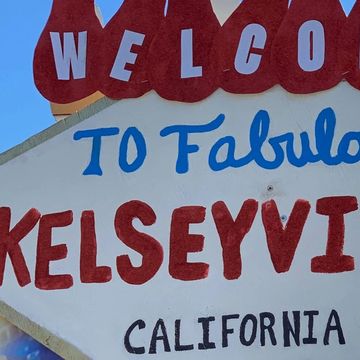We have a saying on the East Cape: “Bad roads, good people.”
Those of us who live in this remote region along the southeastern coast of Baja California Sur are accustomed to traveling the washboards we call roads to reach the closest towns: San José del Cabo to the south or La Ribera to the north. From where I live, the trek on the coastal route takes at least an hour and a half each way—more if you don’t want to tear your vehicle (likely a four-wheel drive) to shreds. Which means a trip to town usually results in an overnight stay rather than fighting the road home.
This article appears in Issue 26 of Alta Journal.
SUBSCRIBE
The roads deter visits from tourists, and if you ask most of the expats who live here, we are just fine with that. What those tourists are missing out on, however, are some of the most abundant and pristine beaches that Mexico has to offer—beaches that surfers from around the world have long known and loved.
I moved from Northern California to Los Cabos’s East Cape in 2016. Having vacationed at the popular resorts in Cabo San Lucas for 20 years, I’d come to love the climate and the beautiful sapphire sea. My husband and I decided we wanted to retire here, but the area was outside our budget: back then, housing in Cabo San Lucas and San José del Cabo started at US$500,000 for the moderate two-bedroom house we were seeking. And those cities were, well…cities. We were more drawn to something rustic. Seeing our frustration with the options, a real estate agent gave us a handful of listings on the East Cape, so we rented a car and headed into the unknown.
We got lost on our first try but eventually made our way to Castillo de Arena, a planned community approximately 35 miles from both San José del Cabo and the La Ribera/Los Barriles area. The region has long spans of deserted beaches and is crisscrossed by mountain trails and deep arroyos. “We are the last frontier of Los Cabos,” says Paul Clark, our local real estate agent.
In Castillo de Arena, we found a two-bedroom home built a decade earlier that was just right for us and our budget. We are about 10 miles south of the Tropic of Cancer, and the views are spectacular: the sun and the moon rise over the expanse of the Sea of Cortez to the east; the sunsets over the Sierra de la Laguna to the west are equally stunning. The night sky is virtually void of light pollution. Who knew there were actually that many stars?
Multiple homes were for sale in Castillo de Arena when we bought ours in 2016. Many of the original owners were Canadians who had built their dream homes but later had to make the difficult decision to move out when age and health issues crept in. Healthcare for non-Mexicans is extremely expensive, and a trip to town on the washboard roads in an emergency is grueling at best. Some moved to gated communities on golf courses; others migrated back to Canada. All homes require maintenance, of course, but out here, where we are off the grid and exposed to the elements, it’s more like high maintenance: Salt air and strong winds pelt the cement-covered exteriors and chip away at the paint. Most of the cement is made with beach sand, and the good measure of salt in the mixture speeds its erosion.
Mexico has strict laws and policies when it comes to home building. You can’t just clear cacti and indigenous flora from your terrain without approval from the local authority. There are firm environmental rules, and formidable fines are imposed on violators. I know of one landowner who was fined US$20,000 for plowing over cardón cacti and palo verde trees without permission.
Out here on the wild coast, we share our existence with native plants as well as native animals of all types and sizes. The East Cape is open range; it is common to have a herd of goats or cattle munch your prize bougainvillea or carefully planted trees. Often, the only road is blocked not only by goats and cattle but by horses and cute burros, too, who beg for carrots. When a burro foal is born in the area, it is the toast of the entire East Cape. Each foal receives a name; we christened the newest one Peanut. Geckos are constant companions in homes, making odd chirping sounds while darting across walls, and snakes are abundant. Most of them are venomless, with the exception of the rattlesnakes.
San Diego transplant Lisa Whitt and her business partner, Norma Gonzalez Montaño, operate a goat ranch about three miles from our community that makes wonderful cheeses and other organic products from the animals’ milk. Whitt moved to the area with her husband, Travis, 14 years ago and has already witnessed, as I have, how the East Cape, one of the poorest areas in Baja, is evolving. “With growth comes opportunities, choices, and responsibilities,” she says. To Whitt’s point, there are changes, but many are for the good. Gonzalez Montaño has chosen to become a businessperson, challenging the paradigm for women in a place where old vaquero traditions hold strong. Gonzalez Montaño’s father, Gumaro, whose family has lived here for a century, recently told me (as roughly translated by Whitt), “The men are given the rich mountain lands, which are bountiful with fruits and water; the women are given the beaches and coastlands, which are useless.”
Those beaches and coastlands are far from useless, though, as many wealthy folks are discovering. New resorts and planned housing-retail communities are threatening to encroach on the East Cape’s Wild West lifestyle. Costa Palmas in La Ribera, which opened in 2019, is an opulent Four Seasons and Aman venture replete with its own marina and golf course built around two freshwater estuaries. Nine Palms, a surfing mecca, has a new development going in, as does another surfing favorite, La Fortuna. And seven miles south of us, a wealthy businessman has diverted the coastal road for a mile, likely in preparation to develop his property; it is still gravel, but smoother now.
A hope to “embrace old traditions and values that have existed here for generations,” as Whitt puts it, is one of many beliefs that bond us all together, whether expat or local. This is a community in which people watch out for one another. The roads are too much trouble for banditos to travel, and the Mexican ranchers who populate this area do not tolerate crime. We are “very aware of each other’s comings and goings,” says my neighbor Val Teters, who moved here from Washington State. Adds Whitt, “After 14 years, I haven’t locked my doors or taken the keys out of my vehicles.” We guard our secret coast well.
With the integration of a few hardy and adventurous Americans and Canadians, some changes have been welcome. Our area relies on solar, propane, and community water tanks. Cell phones have made communication better, and there are now global and local internet services. Clark, the real estate agent who sold us our house, has been on the East Cape since 1996 and describes the relationship between expats and ranchers and locals as “excellent.”
Together, we support the marine life around us. We newer arrivals partner with the Mexican ranchers to keep the beaches and waters pristine. As the waters warm in the fall, the whales migrate, and it’s fascinating to watch the whale cows breach and teach the calves to swim and spew. At other times, the leatherback turtles scurry up onto the beaches and bury their clutches of eggs as best they can. Watching the ritual is priceless. It is a fragile ecosystem, however; for native predators awaiting a meal, the turtles’ eggs are payday. The coyotes, foxes, and birds relish the eggs, and it is sad to come upon the emptied shells. (Residents along the beach are keenly aware and mark the nests with driftwood.) A local by the name of Yvonne scoops up eggs and transports them to a nursery for hatching and documenting. Human intervention, for now, is the best we have to offer.
About 10 miles north of us is Cabo Pulmo. In 1940, John Steinbeck took a six-week trip on a sardine boat to explore Baja, including this speck of a fishing village. In the early 1990s, locals formed a coalition with scientists from the Autonomous University of Baja California Sur to save its reef, which is home to countless whales, sharks, sea lions, and dolphins. Commercial fishing and pearling had almost destroyed this vital habitat, one of only three natural coral reefs in North America. The Mexican authorities stepped in and designated Cabo Pulmo as a national park in 1995, eventually banning all fishing and harvesting of the area. Ten years later, UNESCO made it a World Heritage site, and then it became a Ramsar wetland of international importance. By 2009, researchers found, biomass in the reef had replenished by more than 460 percent.
I talk with Pepe Murrieta, the owner of Pepe’s Dive Center in Cabo Pulmo, who moved to the area in 1992. “It was a very tiny little ranch,” Murrieta says of Cabo Pulmo. When it became a national park, many homeowners sold their land because they could no longer fish, so new people started to come, he says, “people that like conservation, so slowly Cabo Pulmo started to grow. We have about 150 houses now and a few dive centers, restaurants, and gift shops. More visitors every day—there is no slow season anymore.” What we also have, he notes, is “a problem with water.” Indeed, freshwater supply is a looming issue, not helped by the construction of new agua-hungry golf courses.
For now, our East Cape remains the last coastal frontier of the Baja capes. The ranchers and the locals have been so gracious to us: they have shared their land, knowledge, support, and protection. Ultimately, we try to add value while honoring their traditions and culture. We did not move out to the frontier to turn it into a resort. Most of us embrace the East Cape just the way it is, washboard roads and all.•

Cindy Ray has been a resident of Baja California Sur’s East Cape for seven years and contributes to several publications there.























